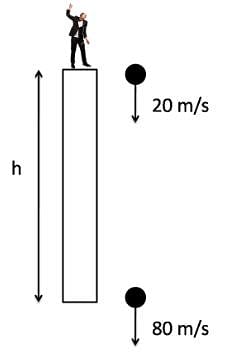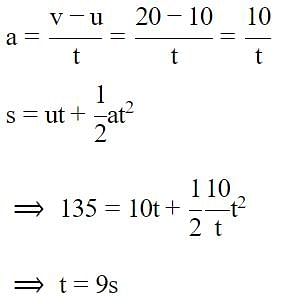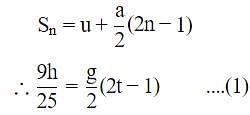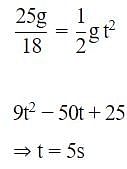Test: Uniformly Accelerated Motion - JEE MCQ
10 Questions MCQ Test - Test: Uniformly Accelerated Motion
A boy standing at the top of a tower of 20 m height drops a stone. Assuming g = 10 ms-2, the velocity with which it hits the ground will be
If a body is thrown up with the velocity of 15 m/s, then the maximum height attained by the body is: (assume g = 10 m/s2)
| 1 Crore+ students have signed up on EduRev. Have you? Download the App |
A body starts to fall freely under gravity. The distances covered by it in first, second and third second will be in the ratio
A body is thrown upwards and reaches its maximum height. At that position:
A ball is thrown vertically downwards with a velocity of 20 m/s from the top of a tower. It hits the ground after some time with the velocity of 80 m/s. The height of the tower is: (assuming g=10m/s2)
A body is thrown vertically up from the ground. It reaches a maximum height of 100 m in 5 seconds. After what time will it reach the ground from the position of maximum height?
A car travelling at a speed of 30 km/h is brought to a halt in 8 m by applying brakes. If the same car is travelling at 60 km/h, it can be brought to a halt with the same braking force in:
A particle moves in a straight line with a constant acceleration. It changes its velocity from 10 ms-1 to 20 ms-1 while covering a distance of 135 m in 't' seconds. The value of 't' is:
A boy standing on a stationary lift (open from above) throws a ball upwards with the maximum initial speed he can, equal to 49 m s-1. How much time does the ball take to return to his hands? If the lift starts moving up with a uniform speed of 5 m s-1 and the boy again throws the ball up with the maximum speed he can, how long does the ball take to return to his hands?
A stone falls freely from rest from a height h and it travels a distance of 9h/25 in the last second. The value of h is: (Take g = 10 m/s2):























